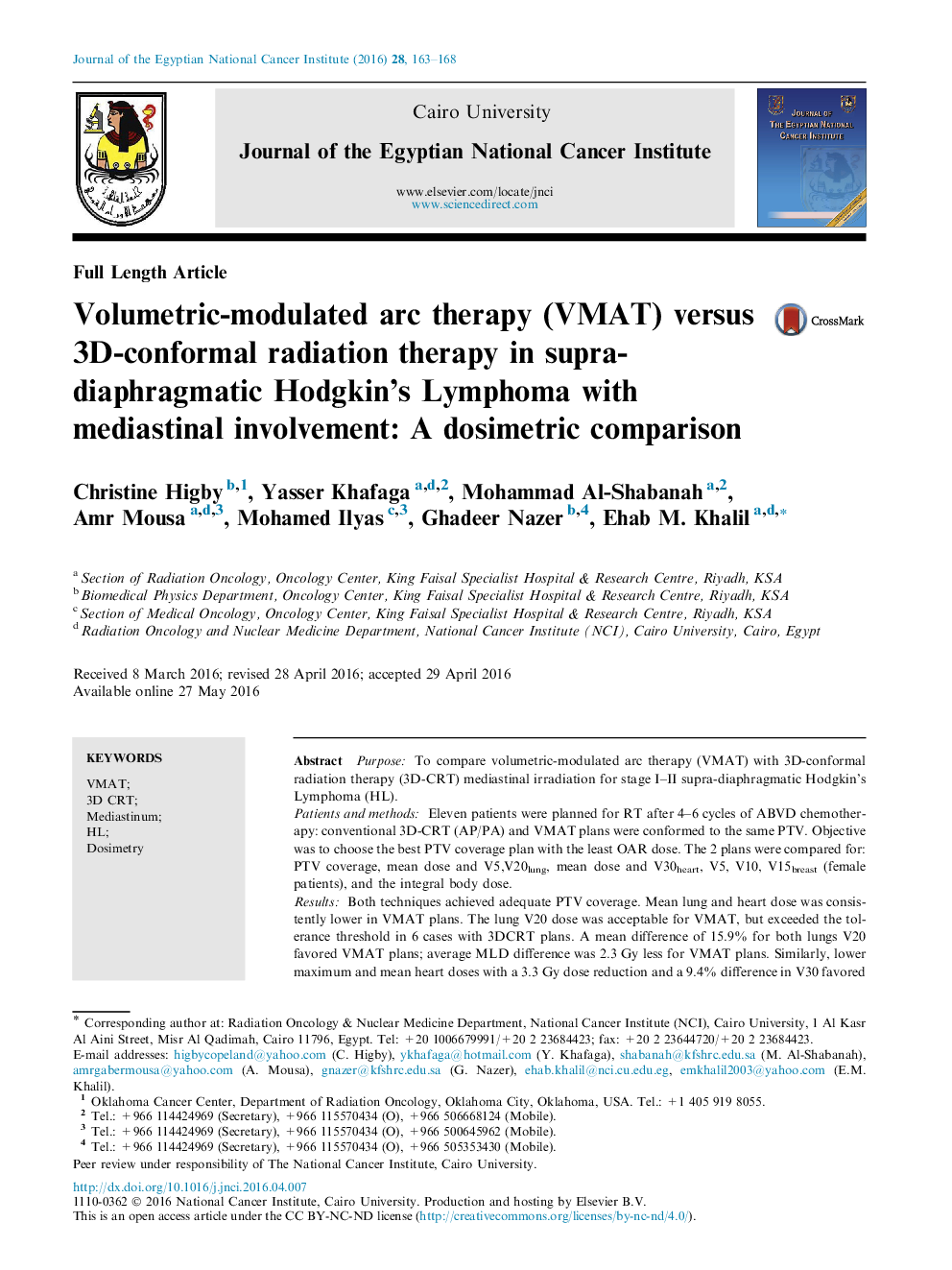| Article ID | Journal | Published Year | Pages | File Type |
|---|---|---|---|---|
| 3988876 | Journal of the Egyptian National Cancer Institute | 2016 | 6 Pages |
PurposeTo compare volumetric-modulated arc therapy (VMAT) with 3D-conformal radiation therapy (3D-CRT) mediastinal irradiation for stage I–II supra-diaphragmatic Hodgkin’s Lymphoma (HL).Patients and methodsEleven patients were planned for RT after 4–6 cycles of ABVD chemotherapy: conventional 3D-CRT (AP/PA) and VMAT plans were conformed to the same PTV. Objective was to choose the best PTV coverage plan with the least OAR dose. The 2 plans were compared for: PTV coverage, mean dose and V5,V20lung, mean dose and V30heart, V5, V10, V15breast (female patients), and the integral body dose.ResultsBoth techniques achieved adequate PTV coverage. Mean lung and heart dose was consistently lower in VMAT plans. The lung V20 dose was acceptable for VMAT, but exceeded the tolerance threshold in 6 cases with 3DCRT plans. A mean difference of 15.9% for both lungs V20 favored VMAT plans; average MLD difference was 2.3 Gy less for VMAT plans. Similarly, lower maximum and mean heart doses with a 3.3 Gy dose reduction and a 9.4% difference in V30 favored VMAT plans. Mean V5lung/female breast and integral dose were invariably higher in VMAT plans because of the low-dose spread.ConclusionsVMAT is a valuable technique for treatment of large mediastinal HL. VMAT spares the lung and heart compared to 3DCRT using ISRT in select HL cases. VMAT allows dose escalation for post-chemotherapy residual disease with minimal dose to OARs. VMAT low radiation dose (V5) to the normal tissues, and the increased integral dose should be considered.
